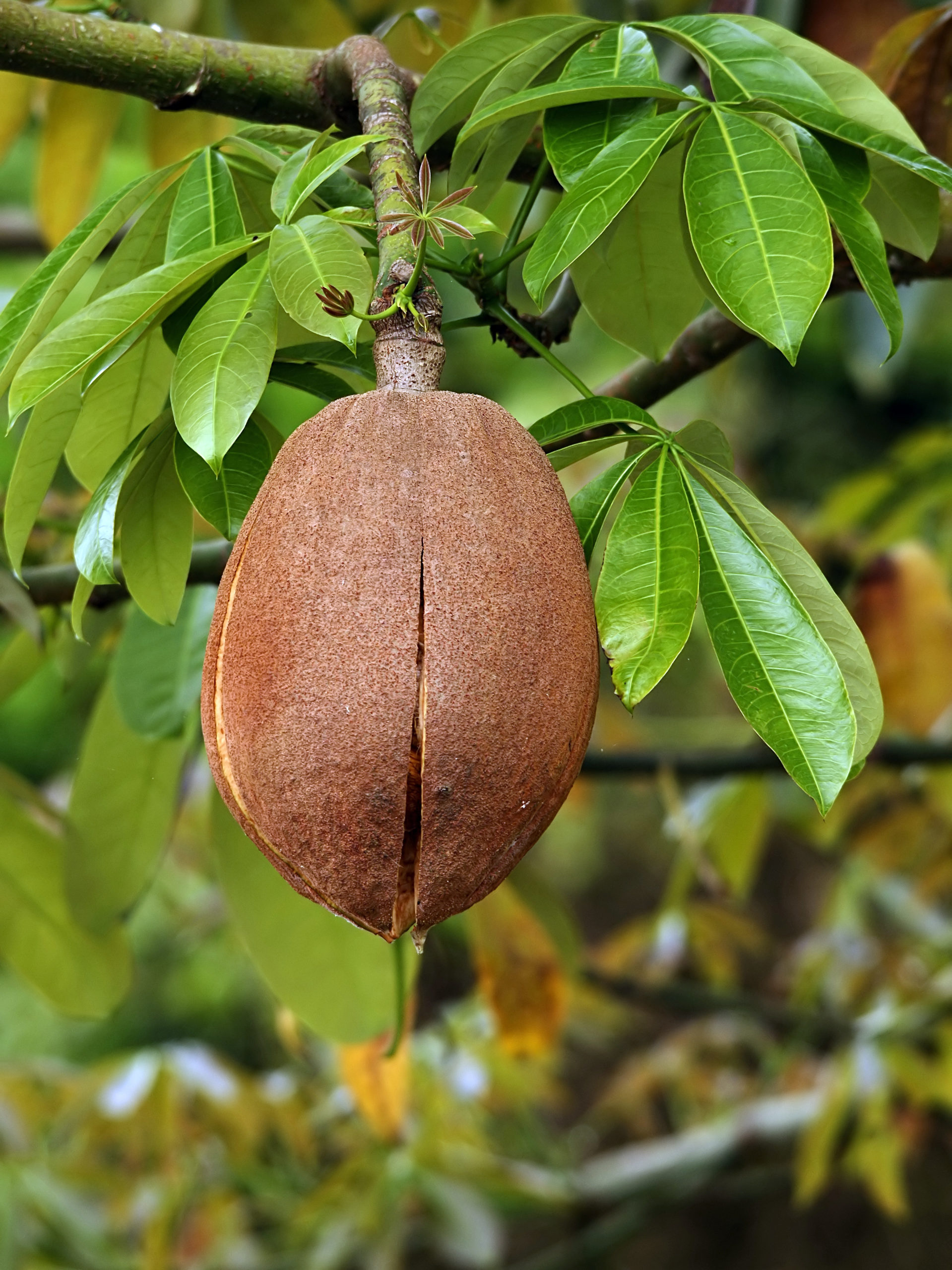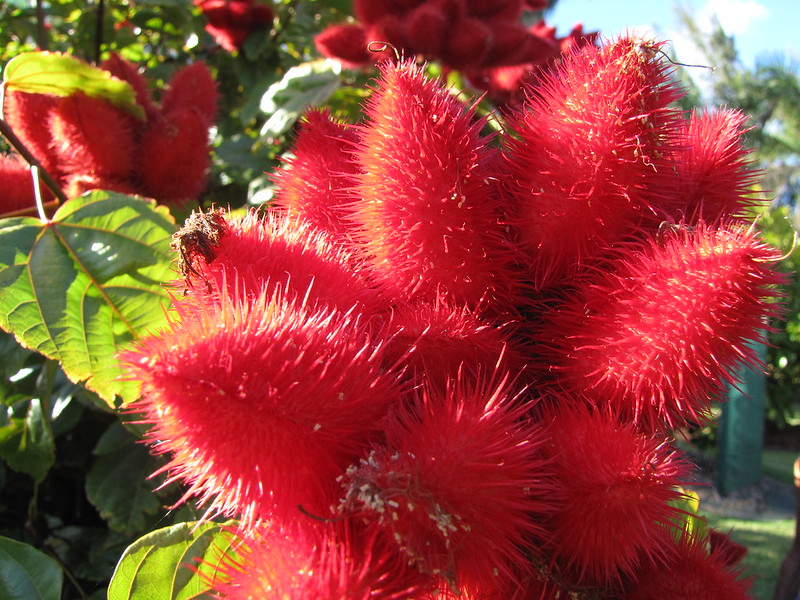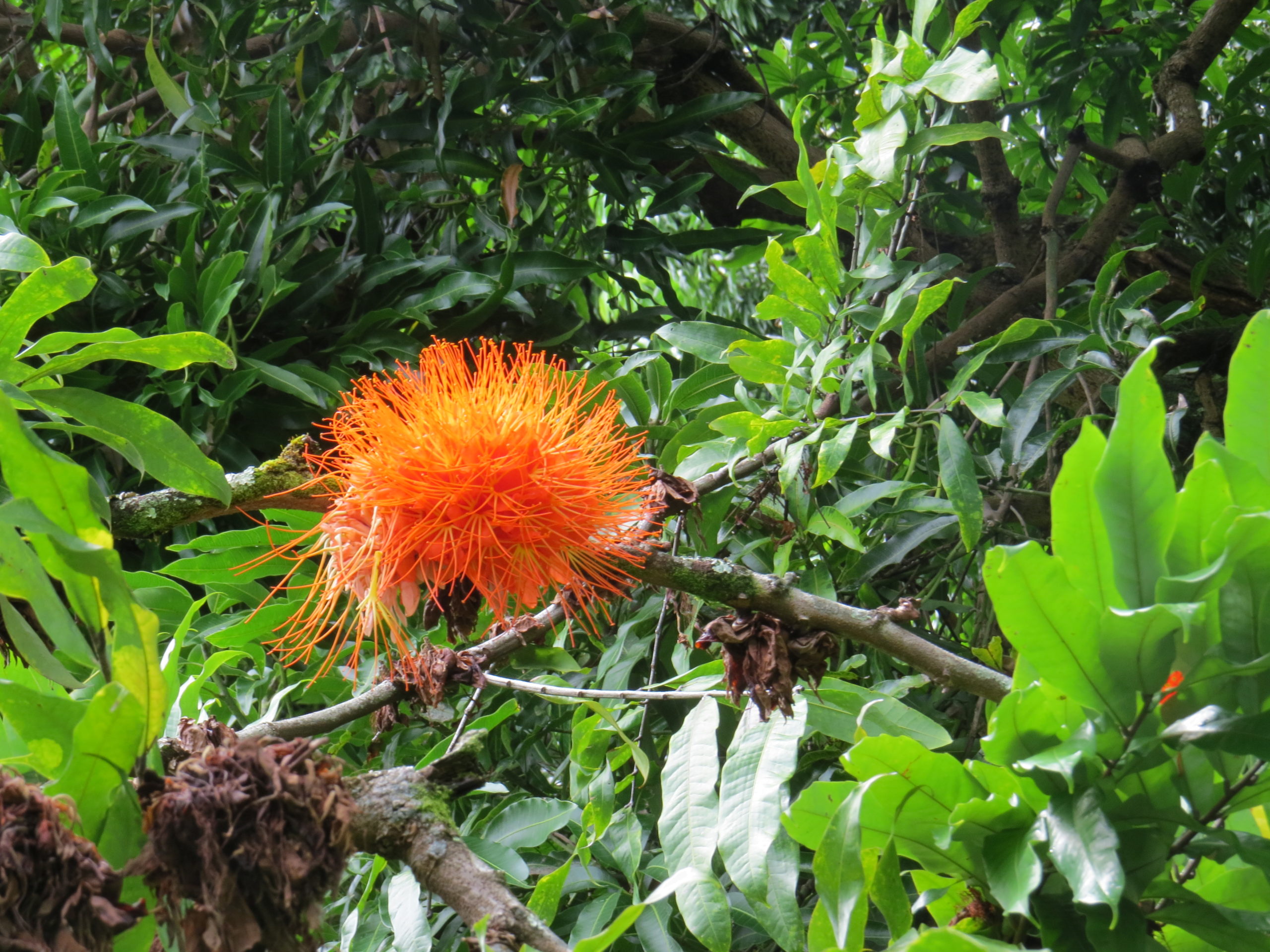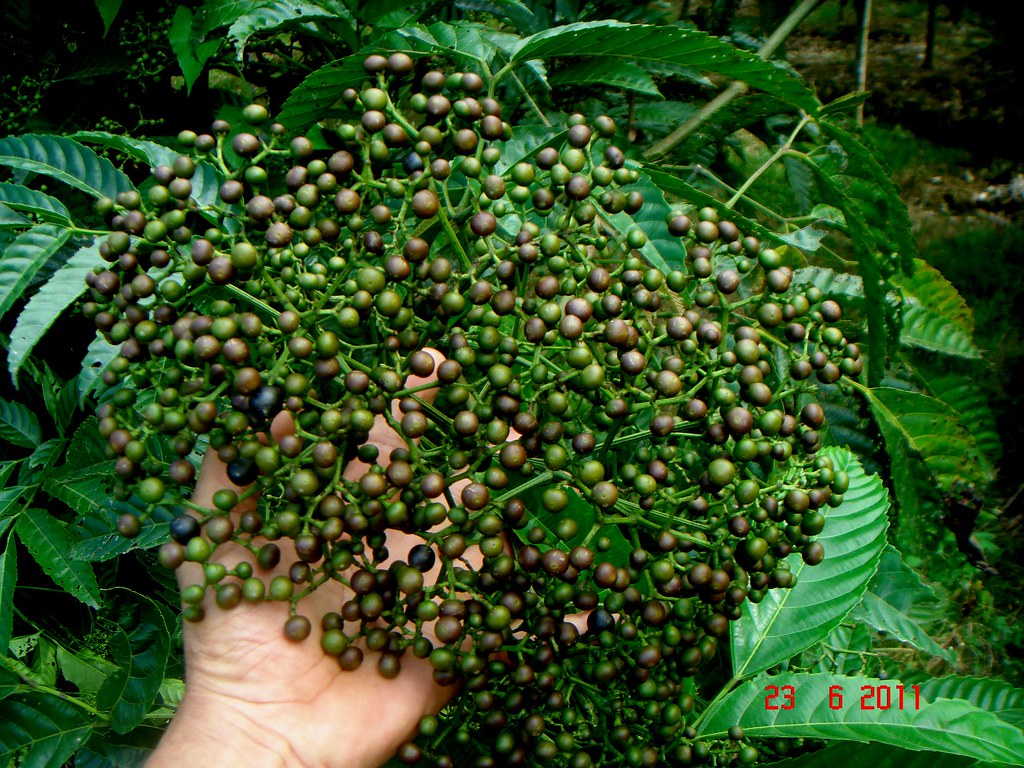
Bandicoot berry
Leea indica is a small tree that spreads from initial plantings. It has an extensive native range in tropical Asia and thrives in tropical climates such as Hawaii. Imported by Joseph Rock and planted in the Lyon arboretum in 1931, adventive seedlings were documented only 12 years later. Today there are naturalized populations on Hawaii Island and possibly Oahu. As an understory tree, it can grow in the shade. The plump purplish-black fruit each contains up to six seeds which are bird-dispersed. Prevention is best with invasive species. Bandicoot Berry should not be cultivated in Hawaii. Prevention is best with invasive plants! Bandicoot berry should be avoided!

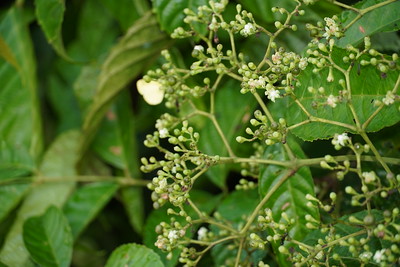
Photos (L-R): Ahmad Fuad Morad, CC, Wikimedia Commons
Impacts:
- Environmental versatility
- Thrives in tropical climates
- Naturalized on Oahu and Hawaii (Hawaiian Islands)
- Reported as a weed of rice crops in Thailand (but impacts unspecified)
- Shade tolerant
- Reproduces by seeds
- Potentially self-compatible
- Seeds dispersed by birds, other animals, and intentionally by people
- Able to coppice and resprout after cutting
Description:
- A small treelet
- Green compound leaves are alternately arranged
- New foliage flushed red
- Greenish-white flowers are born in clusters
- Small, round, purplish fruit contains up to six seeds
Grow these instead
Photos (L-R): Wikimedia Commons, Forest & Kim Starr, BIISC
